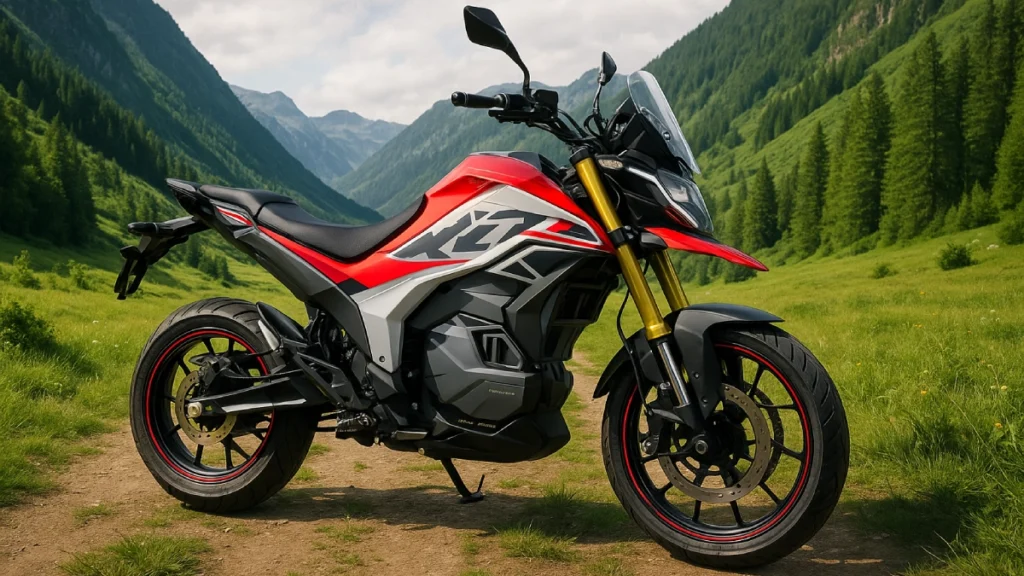Motorcycles have long relied on rider skill, mirrors, and protective gear; Ultraviolette’s radar-equipped X47 reframes the machine as an active safety and software-defined system. This is not a spec gimmick but an architecture shift where sensors, dual displays, charging, connectivity, and control software compose a new baseline for performance, safety, and ownership.
The safety stack: from passive gear to active intelligence
Motorcycling safety has been reactive for decades; radar introduces anticipatory awareness by detecting vehicles closing from the rear and blind spots during lane changes. The addition of a dual-camera dashcam elevates visibility into accountability, enabling incident reconstruction and potentially reshaping claims and training. Together, these systems move two-wheelers toward car-like ADAS awareness while respecting the unique dynamics of bikes.
Sensor fusion requires a smarter control plane
Radar on a motorcycle is only useful if the control software understands lean angle, speed, and rider workload to avoid startle and false alerts. A bifurcated HMI—performance on the primary TFT and ADAS cues on a dedicated secondary display—reduces cognitive load by separating intent from awareness. Mirror-integrated indicators and calibrated alert timing aim to deliver peripheral nudges that inform rather than distract.
Charging architecture: halving friction, multiplying range utility
Type 2 AC compatibility taps into an existing charging ecosystem, expanding real-world access without waiting for bike-specific infrastructure. Parallel boost charging, where onboard and auxiliary chargers work together, shortens dwell time and raises touring viability. This requires coordinated thermal management, robust cabling, and careful power budgeting across battery, motor, and electronics.
Connectivity as core infrastructure
An onboard connectivity stack enables telemetry, theft tracking, firmware updates, and data-driven diagnostics across the vehicle’s lifecycle. The dashcam suite and ride analytics turn the bike into a sensor node, supporting feature evolution like refined alert strategies and adaptive regen profiles. Over time, anonymized telemetry can spotlight hazardous corridors and inform both product improvements and rider guidance.
Supply chain ripple effects
A radar-first motorcycle changes the bill of materials and validation regimes across tiers. Fairings and mounts must preserve RF transparency and withstand vibration, while mirror housings evolve into UI surfaces with integrated light bars. Camera modules, secondary displays, and more complex harnesses push value toward electronics, software, and cybersecurity testing rather than purely mechanical components.
Standards, testing, and regulation on the horizon
Two-wheeler ADAS invites new test protocols for radar calibration under lean, pitch, rain spray, and dense reflections. Insurers may pilot ADAS-informed premiums as rear-collision and lane-change incidents shift, especially for touring and fleet segments. Expect guidance to emerge around alert ergonomics tailored to motorcycling, where startle risk and mid-corner dynamics demand discipline in timing and modality.
Human factors: where trust is won or lost
The system’s value hinges on alert quality—timely, trusted, and non-intrusive—or riders will disable it. Peripheral cues in mirrors and a dedicated ADAS display are designed to preserve focus without cluttering the main cluster. The toughest proving grounds will be edge cases like high-speed filtering, heavy rain, night glare, and mixed traffic speeds, where false positives and missed detections are most consequential.
Market positioning: redefining value at accessible price points
By bundling radar, dual cameras, dual displays, traction and stability control, and multi-level regen in a mid-segment price band, the offer reframes value beyond peak power. The promise shifts to time saved at chargers, risk mitigated in traffic, and evidence captured after incidents. Competitors will likely accelerate blind-spot radar, camera suites, and Type 2 compatibility in upper tiers first, then cascade features downmarket.
Second-order effects: behavior and business models
- Insurance and fleets can leverage video-backed telematics for usage-based premiums, faster claims triage, and targeted coaching.
- Aftermarket ecosystems will form around auxiliary chargers, radar-friendly luggage mounts, and RF-transparent bodywork components.
- Brand apps can curate dashcam content, crowdsource hazard heatmaps, and deliver rider coaching tied to real-world telemetry.
- Regulators may explore ADAS recommendations for expressway access if data show reductions in rear-approach and lane-change incidents.
What it means for riders now
Commuters get a safety buffer where mirrors and quick glances can miss fast-approaching vehicles, especially in dense or high-speed traffic. Tourers benefit from broader charging access and quicker turnaround via parallel charging, while the dashcam adds peace of mind on unfamiliar routes. Like ABS a decade ago, radar-guided awareness could become table stakes within a product cycle, reshaping expectations for what a modern motorcycle should do.
Last Updated on September 23, 2025 by Lucy




